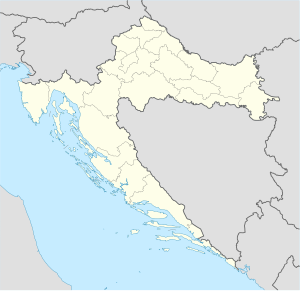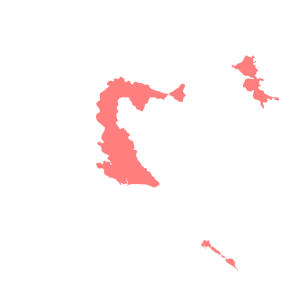Miljevci plateau incident
| Battle of the Miljevci Plateau | |||||||
|---|---|---|---|---|---|---|---|
| Part of the Croatian War of Independence | |||||||
|
Miljevci Plateau on the map of Croatia. RSK- or JNA-held areas in early 1992 are highlighted red. |
|||||||
|
|||||||
| Belligerents | |||||||
|
|
|
||||||
| Commanders and leaders | |||||||
|
|
|
||||||
| Units involved | |||||||
| 113th Brigade 142nd Brigade |
1st Brigade | ||||||
| Strength | |||||||
| 250 | unknown | ||||||
| Casualties and losses | |||||||
| 7–8 killed | 40 killed, 17 captured 10 tanks and APCs destroyed 6 howitzers captured |
||||||
The Battle of the Miljevci Plateau was a clash of the Croatian Army (Hrvatska vojska - HV) and forces of the Republic of Serbian Krajina (RSK), fought on 21–23 June 1992, during the Croatian War of Independence. The battle represented the culmination of a series of skirmishes between the HV and the RSK forces in Northern Dalmatia, after the implementation of the Vance plan and deployment of the United Nations Protection Force (UNPROFOR) began. The skirmishes occurred in the pink zones—areas under control of the RSK, but outside the UN Protected Areas established by the Vance plan.
Elements of two HV brigades advanced several kilometres north of Šibenik and captured the Miljevci Plateau, encompassing 108 square kilometres (42 square miles) of territory and seven villages. After the battle, the UNPROFOR requested the HV to pull back to its positions prior to 21 June, and the request was followed by the United Nations Security Council Resolution 762 urging Croatia to withdraw from the plateau, but the HV remained in place. In the immediate aftermath, Croatian authorities claimed the offensive was not ordered by the General Staff and that the advance was made in response to a series of provocations. After the battle, some bodies of the killed RSK soldiers were thrown into a karst pit and were not retrieved until August, when the released prisoners of war informed the UNPROFOR of the location of the bodies.
In 1990, following the electoral defeat of the government of the Socialist Republic of Croatia, ethnic tensions worsened. The Yugoslav People's Army (Jugoslovenska Narodna Armija – JNA) confiscated Croatia's Territorial Defence Force's (Teritorijalna obrana – TO) weapons to minimize resistance. On 17 August, the tensions escalated into an open revolt by Croatian Serbs, centred on the predominantly Serb-populated areas of the Dalmatian hinterland around Knin, parts of the Lika, Kordun, Banovina regions and eastern Croatia.
...
Wikipedia


